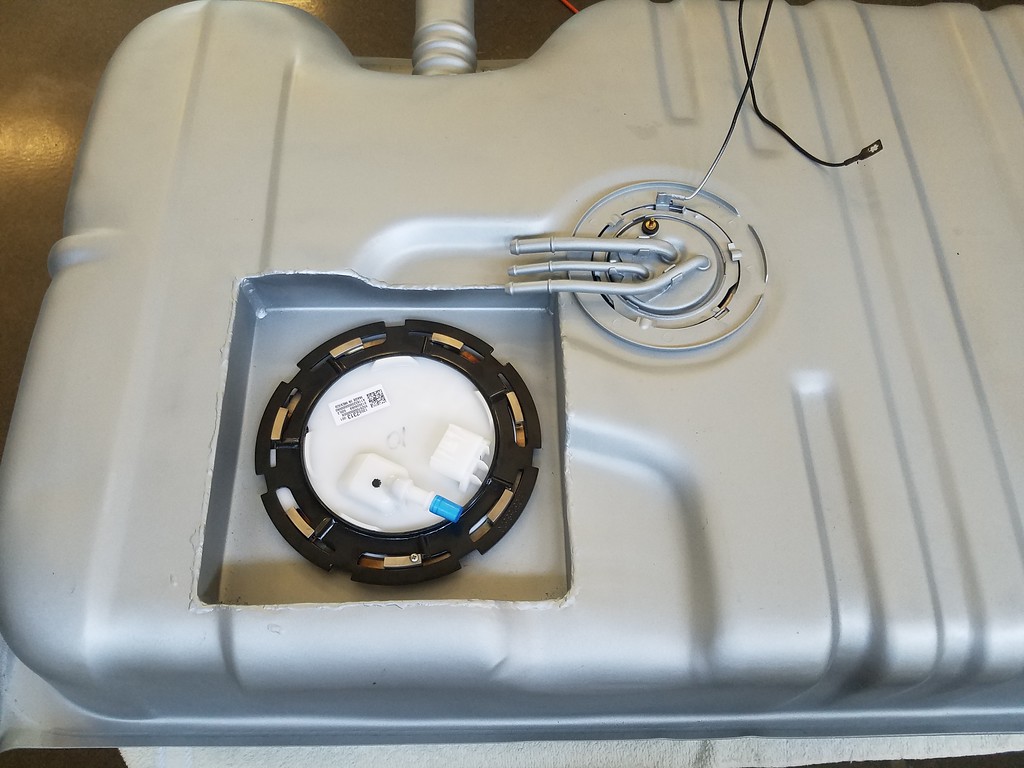So these are not the best pictures but hopefully with an explanation it'll help with how the tank vent on my 1985 MCSS stock tank works.
This is what the pickup tube\sending unit\vent unit looks like installed.

This is what is inside the tank.

Basically one 3/8s line is the pickup tube from the sock on the bottom of the tank that fed the old fuel pump, the 5/16s line is the return from the old fuel pump and the other 3/8s line is the vent. I now have the two lines that led to the old mechanical pump blocked off and the 3/8s vent line and sender is all I am using this for.
Just inside the tank the vent line has a 90 degree fitting with a splash flap maybe 1/4" away covering the end of the fitting. I don't have a good picture of this, sorry. Think of the splash flap as covering the end of the fitting but still allowing air to vent out or in the tank.
Outside the tank the vent connects to a rubber fuel line which goes up over the rear axle and connects to a 3/8s hard line that runs up the driver side of the frame and connects to the charcoal canister in engine bay on the port that says "tank". The other connection on the canister says "carb" and is connected directly to a ported vacuum source on the throttle body.
That's it... The O-ring seal on the pickup is an OEM design and works great, the 34 year old rubber line from the pickup to the hard line is still in great shape and doesn't seep or leak and all of the soft lines in engine bay have been replaced with new EFI rated rubber lines. The engine sucks on the canister intermittently as ported vacuum increases and decreases but doesn't hold steady pressure on the tank like manifold vacuum would.
Hope that helps somewhat. My car would smell the garage up with fuel smell after parking it with the carb setup on it but now with the PTFE line and the TBI, it leaves zero fuel smell in the garage or while driving it hard. I haven't had it on track yet with the EFI but I expect it to be the same there as well.